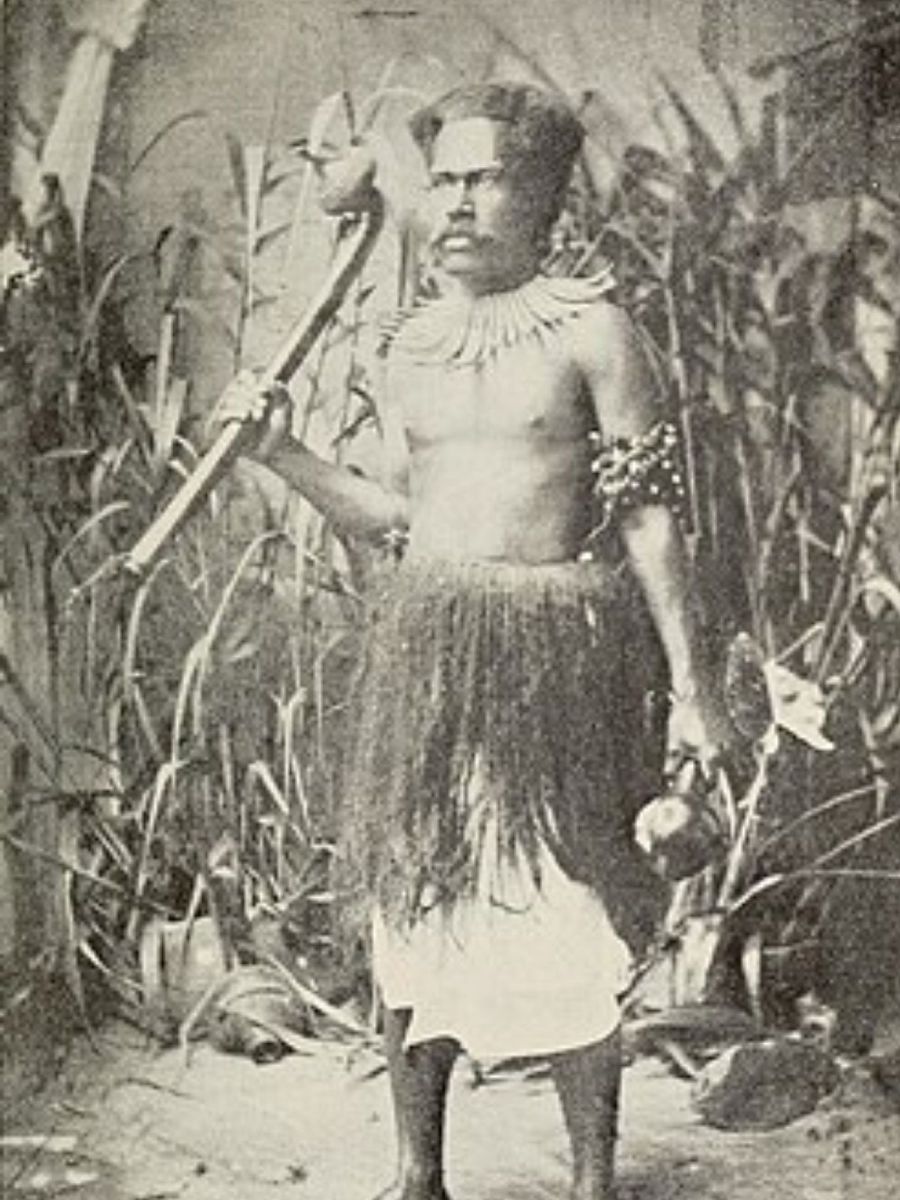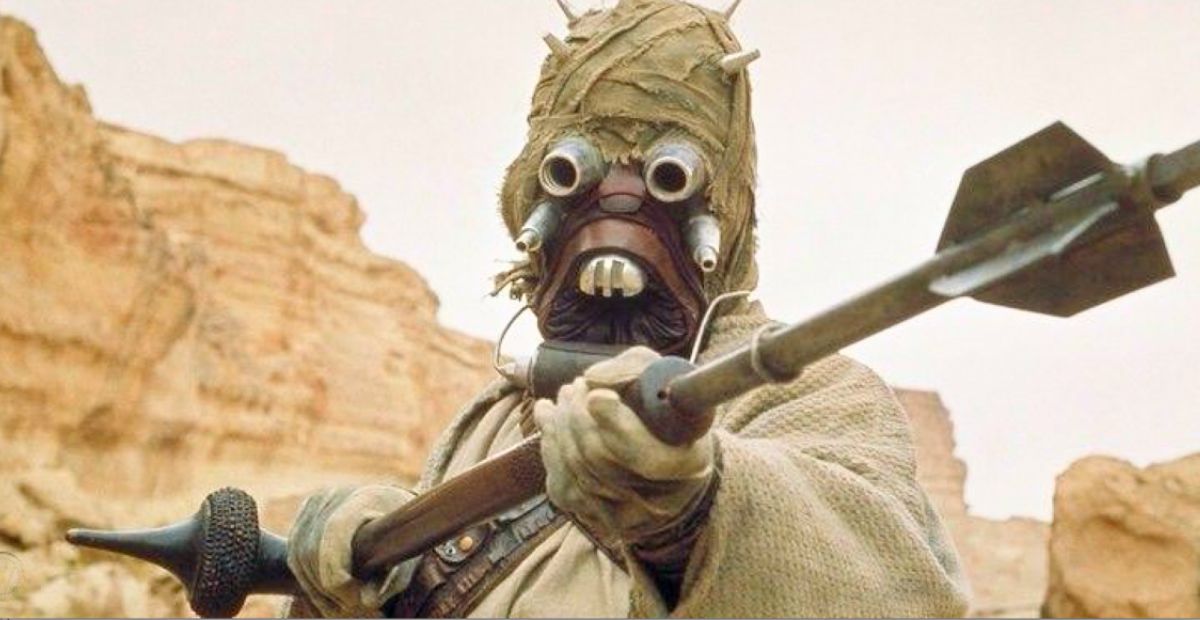Star Wars tends to intersect with real life. World War II is a major influence on the films, including X-Wing and Tie Fighter battles. Weapons have also been incorporated into the movies from this historical period. The Tusken gaffi stick is one weapon that derives from a different time and location. Here we can point to how a traditional Fijian weapon inspired the gaderffii stick.
Tusken Gaffi Sticks and the Totokia
We can thank a fan here for sharing how a Tusken gaffi stick looks very similar to a weapon in a Samoan museum. As we know, the gaderffii stick is the club that a Tusken Raider used to “jab and pummel” Luke in A New Hope. An effective weapon in “the right hands”, it served the Sand People well for fighting and with such tasks as cleaning bantha teeth.
Its companion in real life is the totokia from Fiji. Also called (but mislabeled) the pineapple club, the totokia looks like a spiked ball hoisted at the end of the weapon, like the gaffi stick. Other sites specify how the totokia is “a traditional Fijian weapon” that dates back to the 1800s and was often linked with “chiefs and renowned warriors.”

As with gaderffii sticks, Fijian weaponry were “battle hammers” that could “deliver a deadly, focused blow” and were used in “close-quarter combat.” Totokias can still be viewed today at several museums, such as the Museum of New Zealand Te Papa Tongarewa.
Past articles like this one spotlighted how the totokia provided the inspiration for prop designers to develop the gaderffii stick for the first original movie. In fact, the gaffi stick handle drew on “a full-length totokia” and its “top-heavy” look. We can even see how Star Wars incorporated “different incarnations” to capture the variety of the real weapon.
In particular, the film made use of two “rootstock club” or Vunikau versions and a “gunstock” style club that resembles the end of a rifle. In the scene when Luke is attacked, we see one of the rootstock varieties, complete with a club and spear-pointed end.
We can gather from this scene that if the Raider landed a direct blow on Luke’s head, it would have caused a “peck” hole in his skull. That result would have been another similarity between the Fijian totokia and the gaderffii stick.
Other Weapons of Star Wars and Gaderffii Sticks
More attention has been paid to how blasters in Star Wars resemble real-life weapons. We can point to the E-11 Imperial Stormtrooper Blaster and the DH-17 Rebel Blaster as two prominent examples that came out of World War II. The former was based on the Sterling Mk.4 submachine gun, while the latter took the same submachine gun and modified the barrel and scope.
Other sites link history to Star Wars with the DLT-19 Heavy Blaster Rifle and the German MG34 Machine Gun. Closer to the world of the Tusken Raiders, we can also mention the Jawa Ion Blaster that borrowed from a British Lee-Enfield Rifle. There are more we could specify, but we get the idea that World War II was a particularly strong influence on weaponry in the galaxy.
That’s what makes the connection between the gaderffii stick and the totokia so interesting and unique. We do have traditional clubs that appear to draw on ancient history and Gamorrean Battleaxes that seem to resemble medieval weaponry. Yet, the totokia-gaffi sticks stand out for their purposeful use of history, not based on World War II.
We saw the gaffi stick make a prominent re-appearance in The Book of Boba Fett. In Season 2, Episode 6, Boba got to “show off his prowess with his new weapon.” We also saw a Tusken Raider use a gaderffii stick to clean the teeth of a bantha. Versatile and deadly, like the real-life version.
Tusken Gaffi Stick and the Totokia
With the gaffi stick and Totokia, we have a close connection with history. The Fijian weapon informed the look and purposes of the gaderffii stick. We encounter real life in Star Wars yet again, but in perhaps the most original way.

